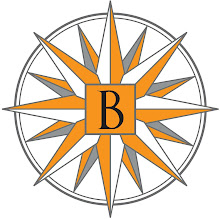Sitka in 1867. Baranof Castle is between the peaks at far right.
Baranof Castle, as it came to be called, was the only Russian lighthouse transferred to the United States when Alaska was acquired in 1867. The light was deactivated in 1877; the massive building burned down in 1894.
The below passage is from Appleton’s Guide-book to Alaska & the Northwest Coast (1893) by Eliza Ruhamah Scidmore (1856-1928). The first female trustee of the National Geographic Society, who made several trips to Japan, is best remembered for hatching the idea of planting Japanese cherry trees in Washington, DC.
Sitka & Vicinity: Makhnati (Rugged) Island is the landmark for ships from the ocean. It was chosen for a light-house site in 1867, and Captain Beardslee’s wooden beacon on the seaward bluff is often taken for a shaman’s grave. Signal Island was the place for bonfires to light and lead ships in Russian days. The firing of a gun caused the beacon on the citadel roof to flash out, and men were in waiting to light the signal-fires that marked the course into the harbor. Departing ships were blessed by the Russian bishop in full canonicals, and deck, mainmast, flag, and boats rowed three times round, singing a farewell, and nine cheers sped the ship as the sails filled….
A long flight of steps leads to the Castle, as Americans have called it since 1867, crowning a rocky eminence 80 ft. in height. Baranof first occupied a leaky two-roomed cabin at the foot of Katlean’s Rock, where the barracks of jail kitchens stand. Later he built a block-house on the height, which was burned. Governor Kupreanoff built a large mansion, which was nearly completed at the time of Sir Edward Belcher’s visit, 1837. It was destroyed by the great earthquake of 1847, and rebuilt on the same plan….
It is a massive structure, measuring 86 x 51 ft., built of cedar logs, joined with copper bolts and riveted to the rock. It is three stories in height, with a glass cupola, which was formerly the light-house of the harbor, the lamp standing 110 ft. above the sea. It was richly furnished and decorated when transferred to the U.S. military commandant in 1867, but after the departure of the troops was looted of every belonging, wantonly, stripped, and defaced. No repairs were made until 1893….
 Detail of Russian Castle (undated), from Univ. of Washington Libraries.
Detail of Russian Castle (undated), from Univ. of Washington Libraries.Two young officers of the U.S.S. Adams and the purser of the Idaho manufactured a ghost story to meet the demands of the first pleasure travelers in 1883, who insisted that the deserted and half-wrecked castle must be haunted. A Lucia di Lammermoor, condemned to marry against her will, killed herself, or was killed by a returned lover, in the drawing-room, the long apartment on the second floor, north side, adjoining the ball-room, where she walks at midnight.
Baranof Castle burning, from Univ. of Washington Libraries.








No comments:
Post a Comment